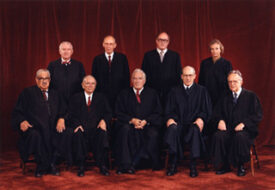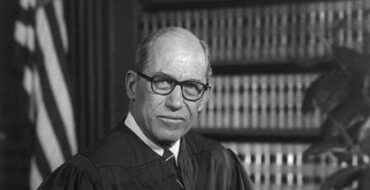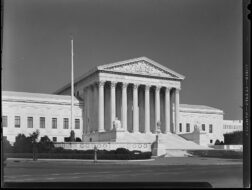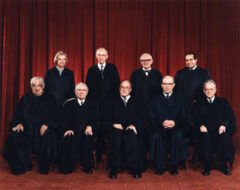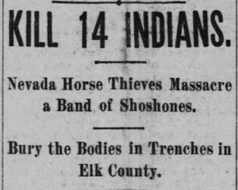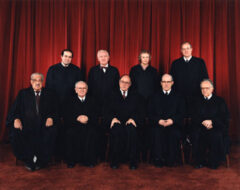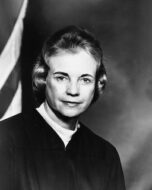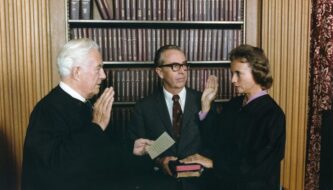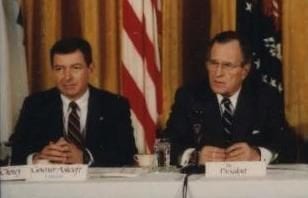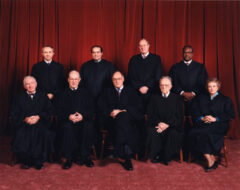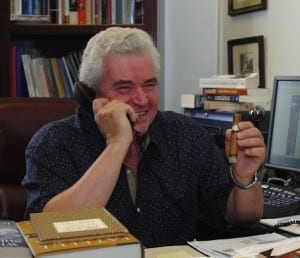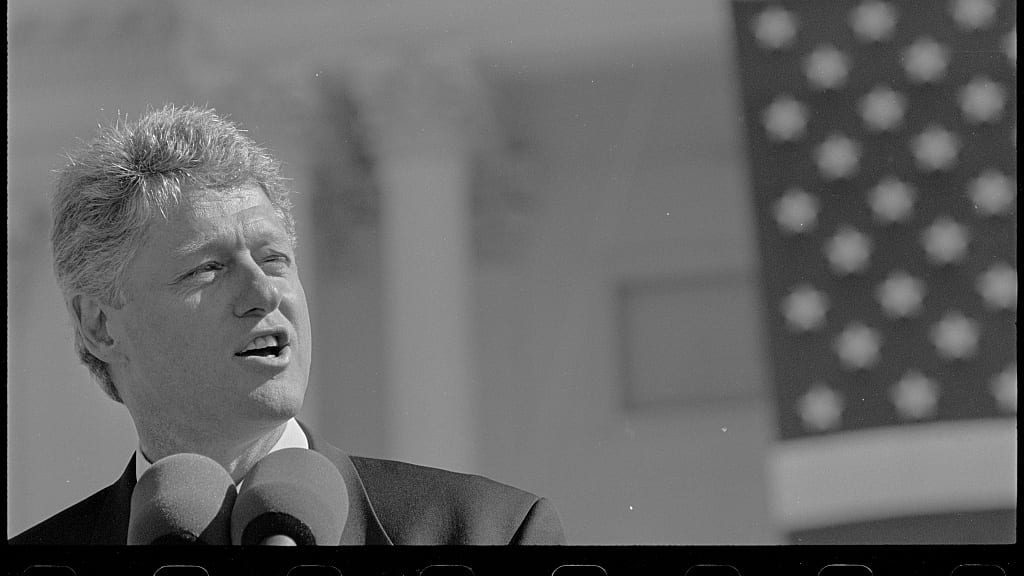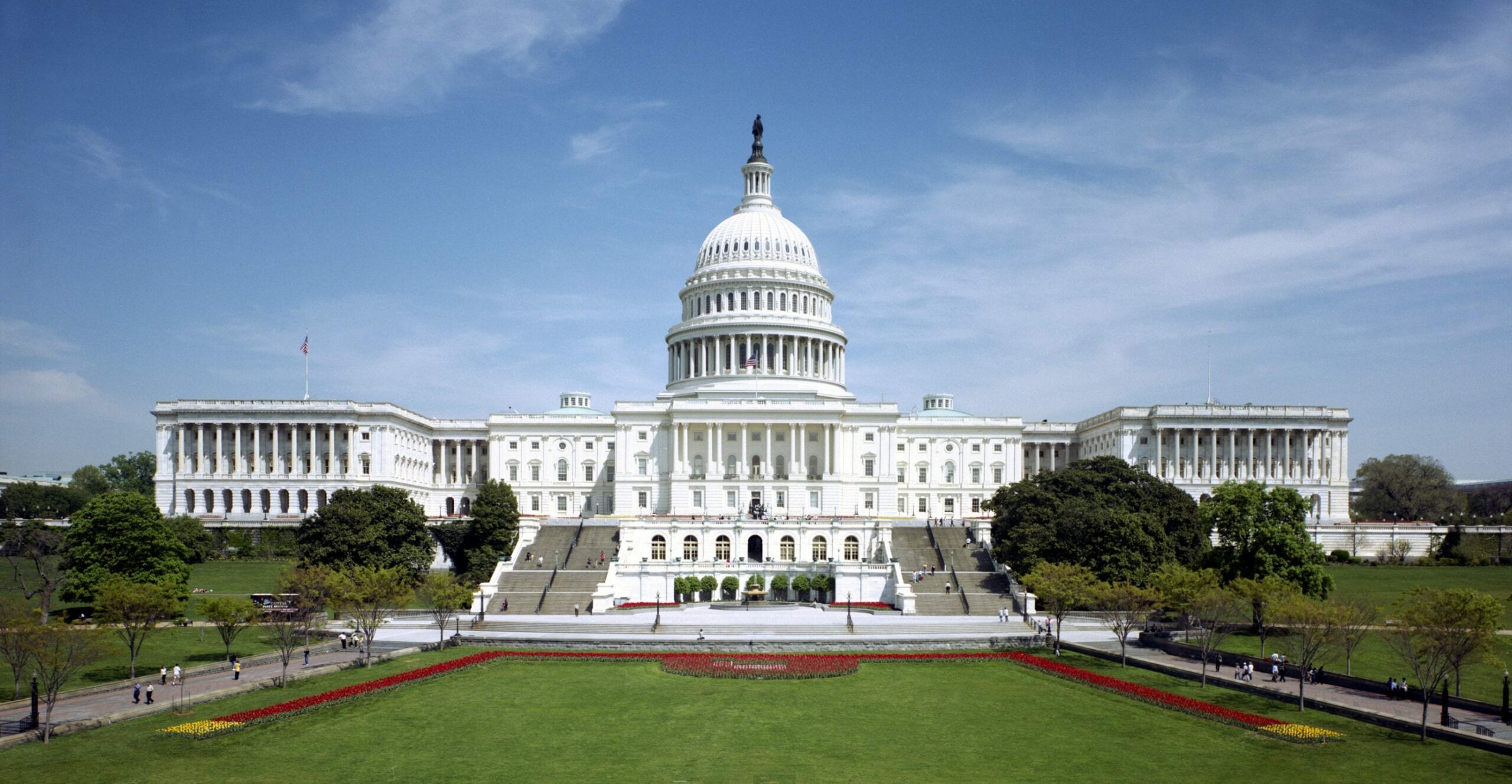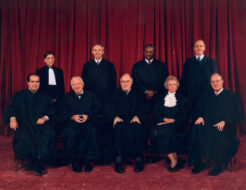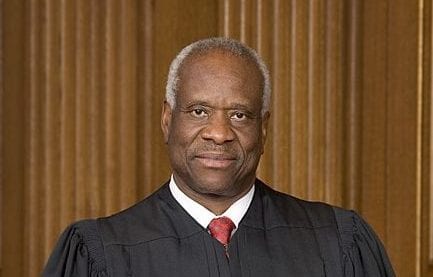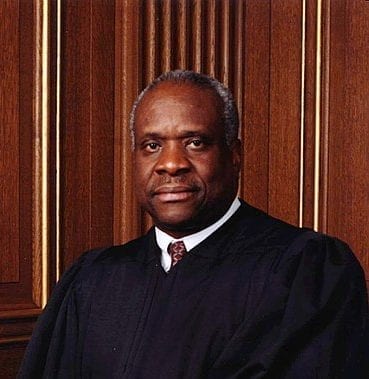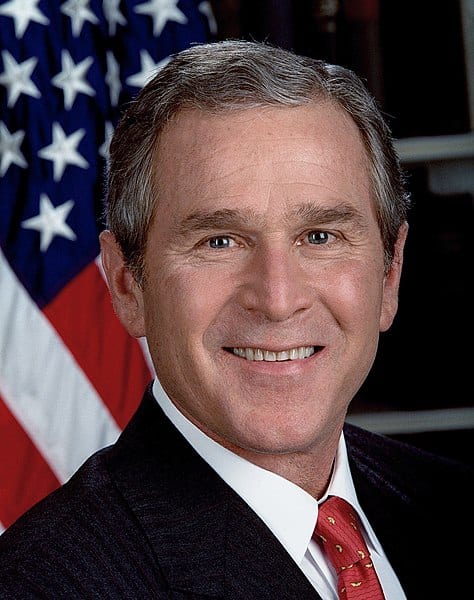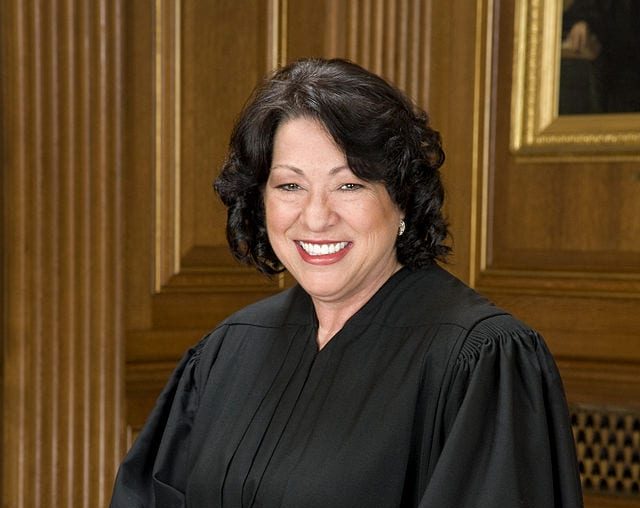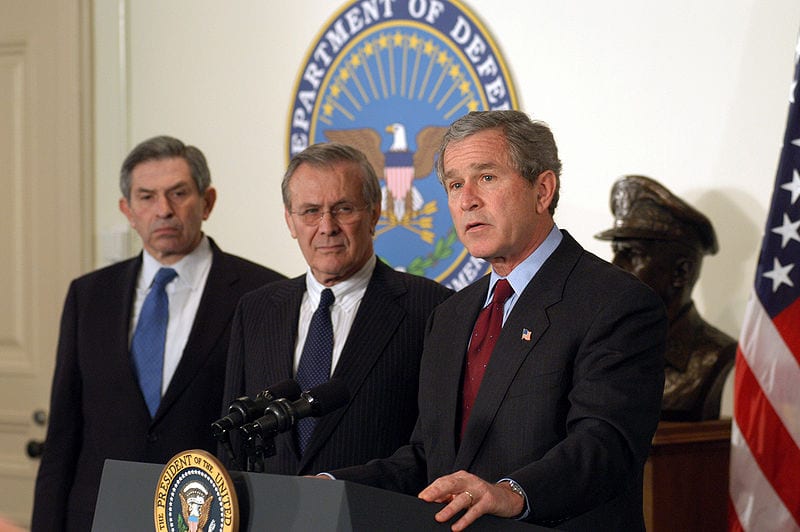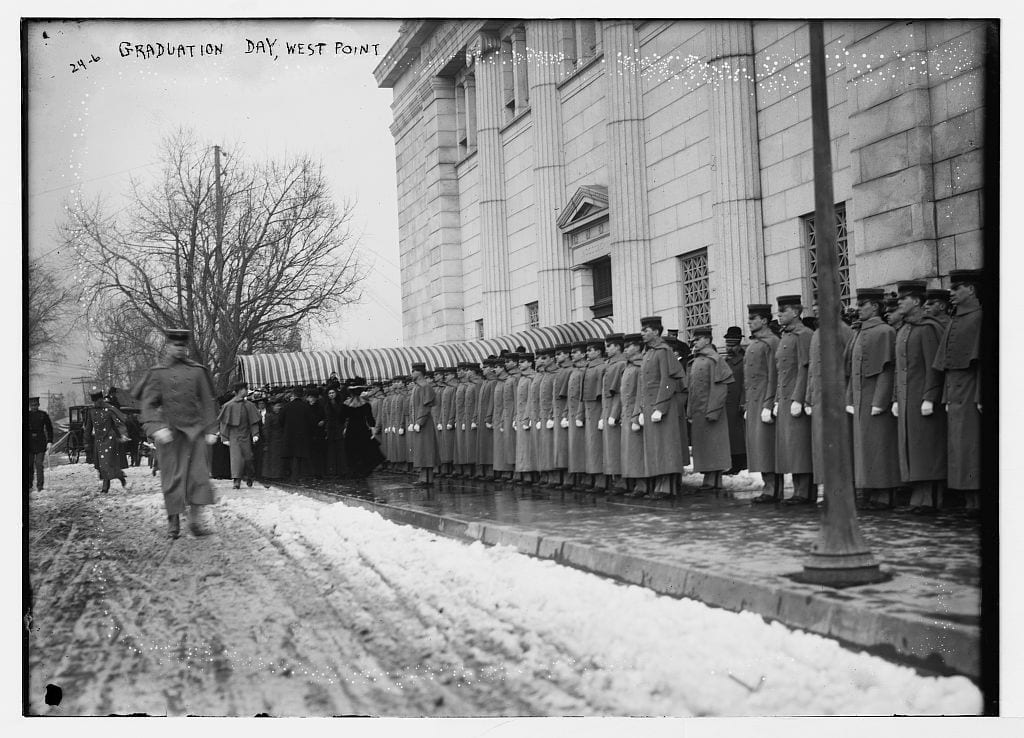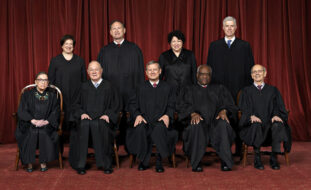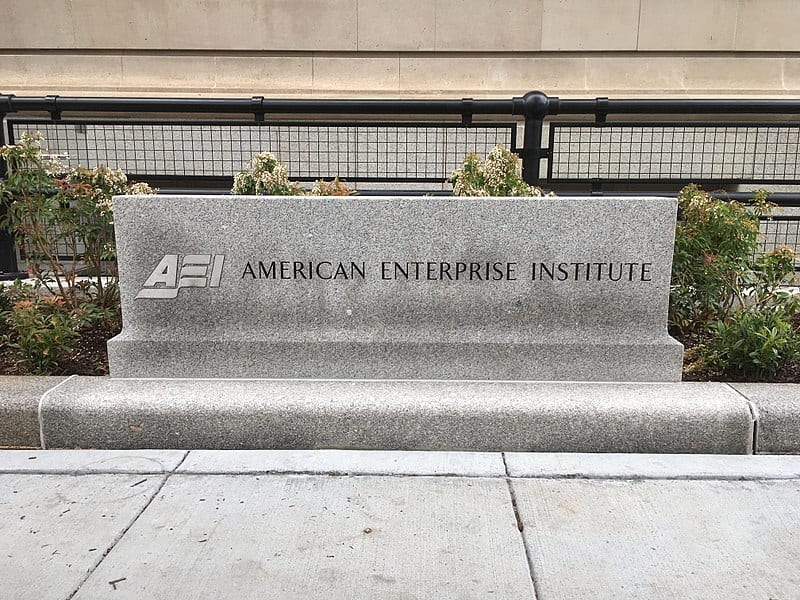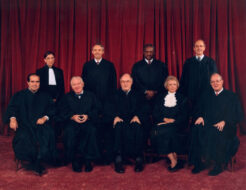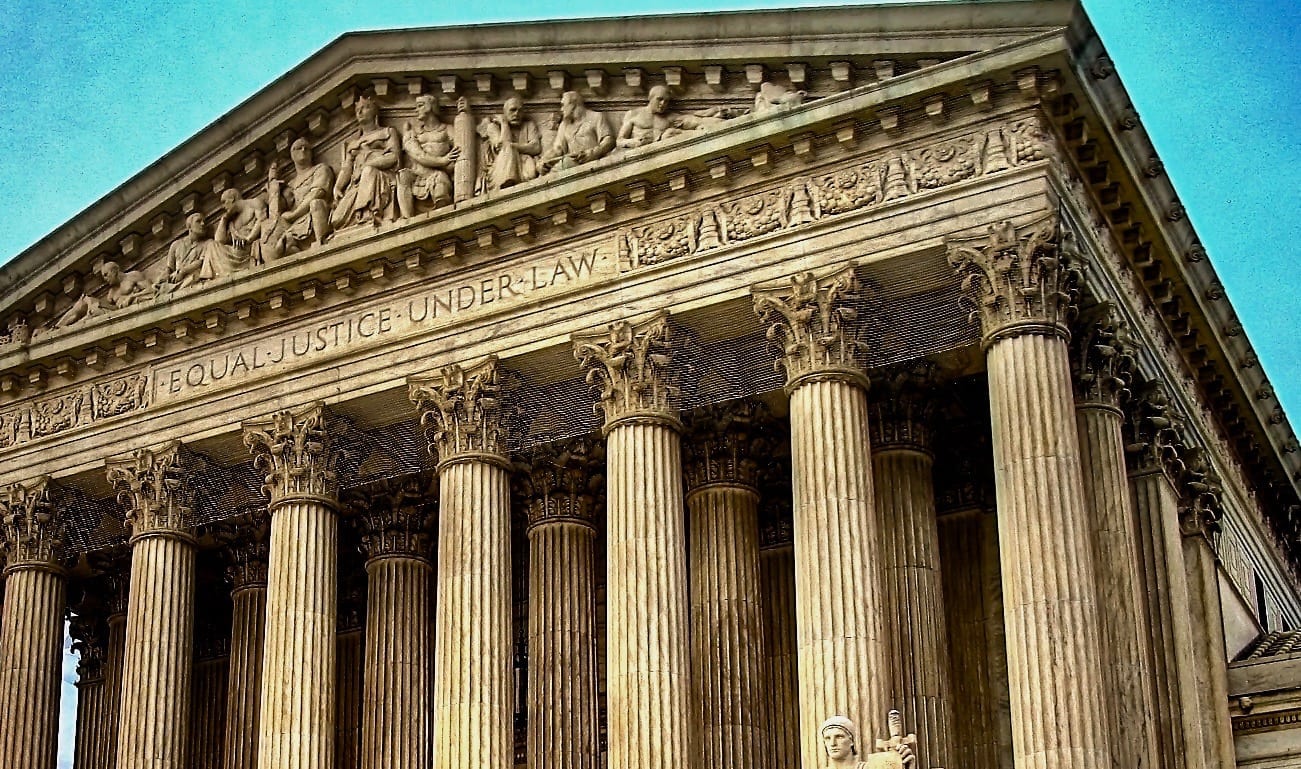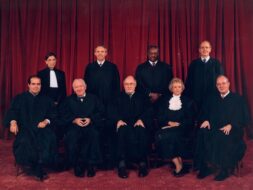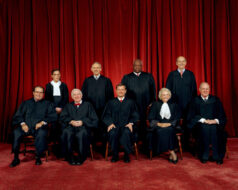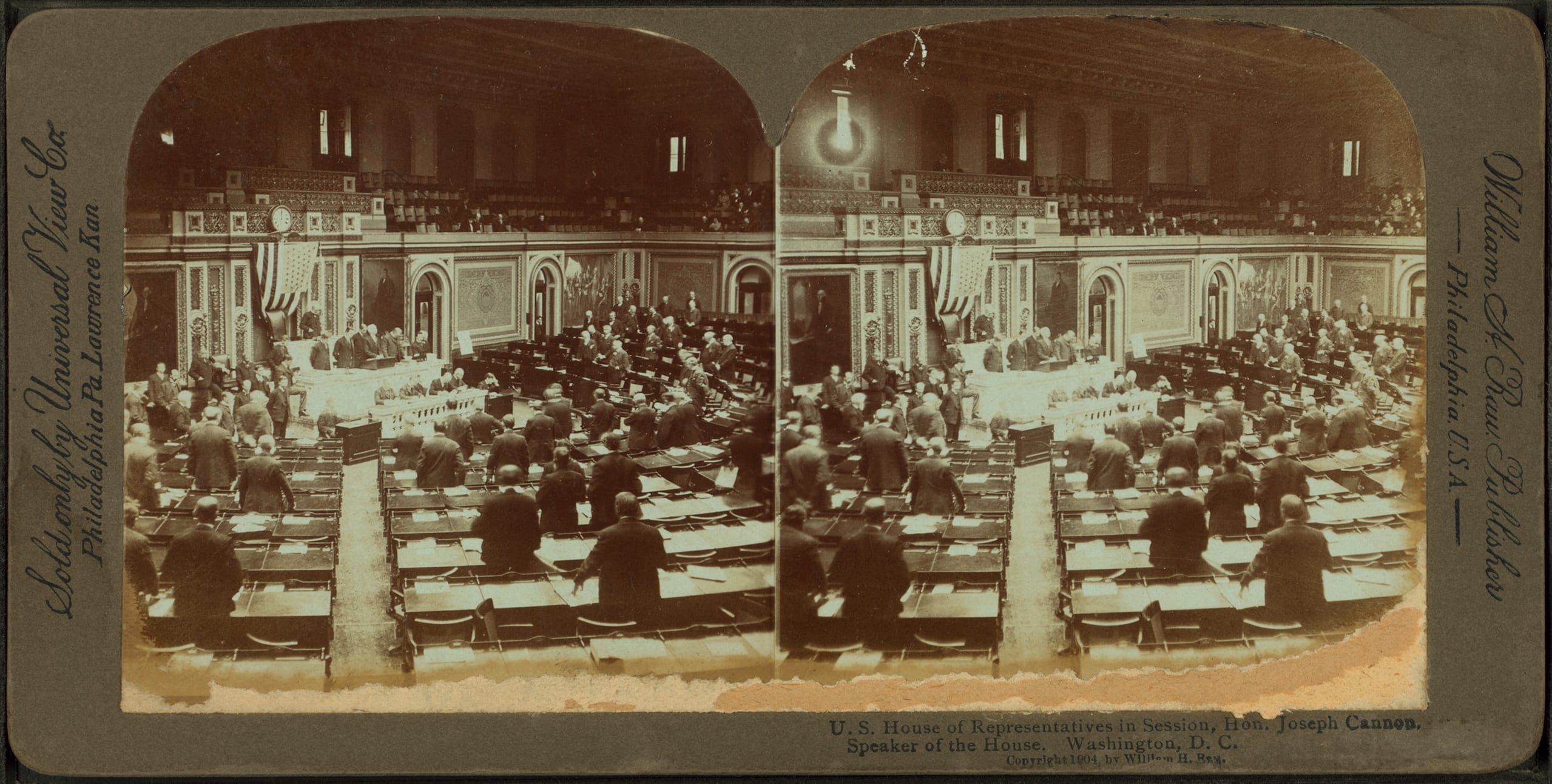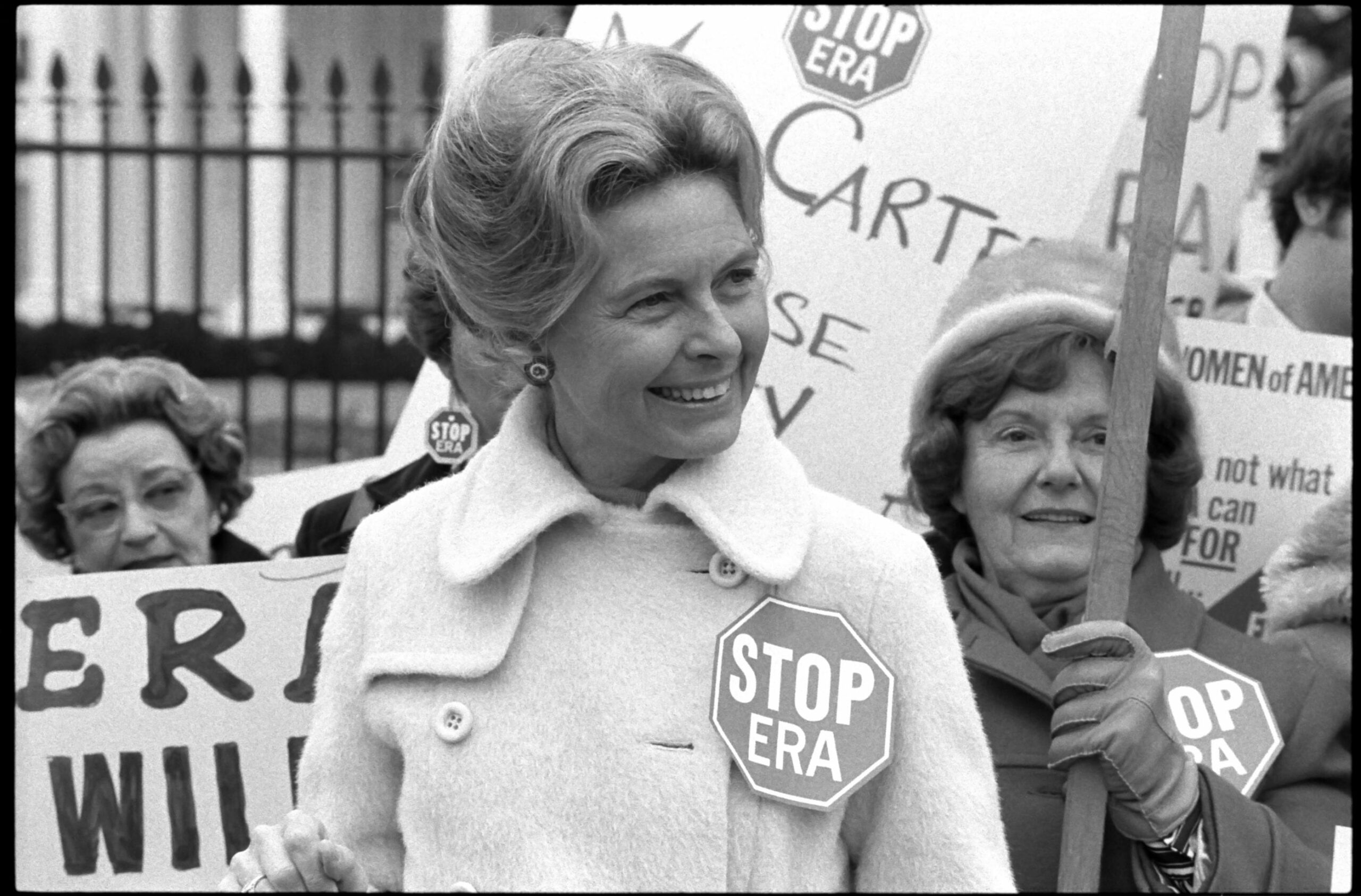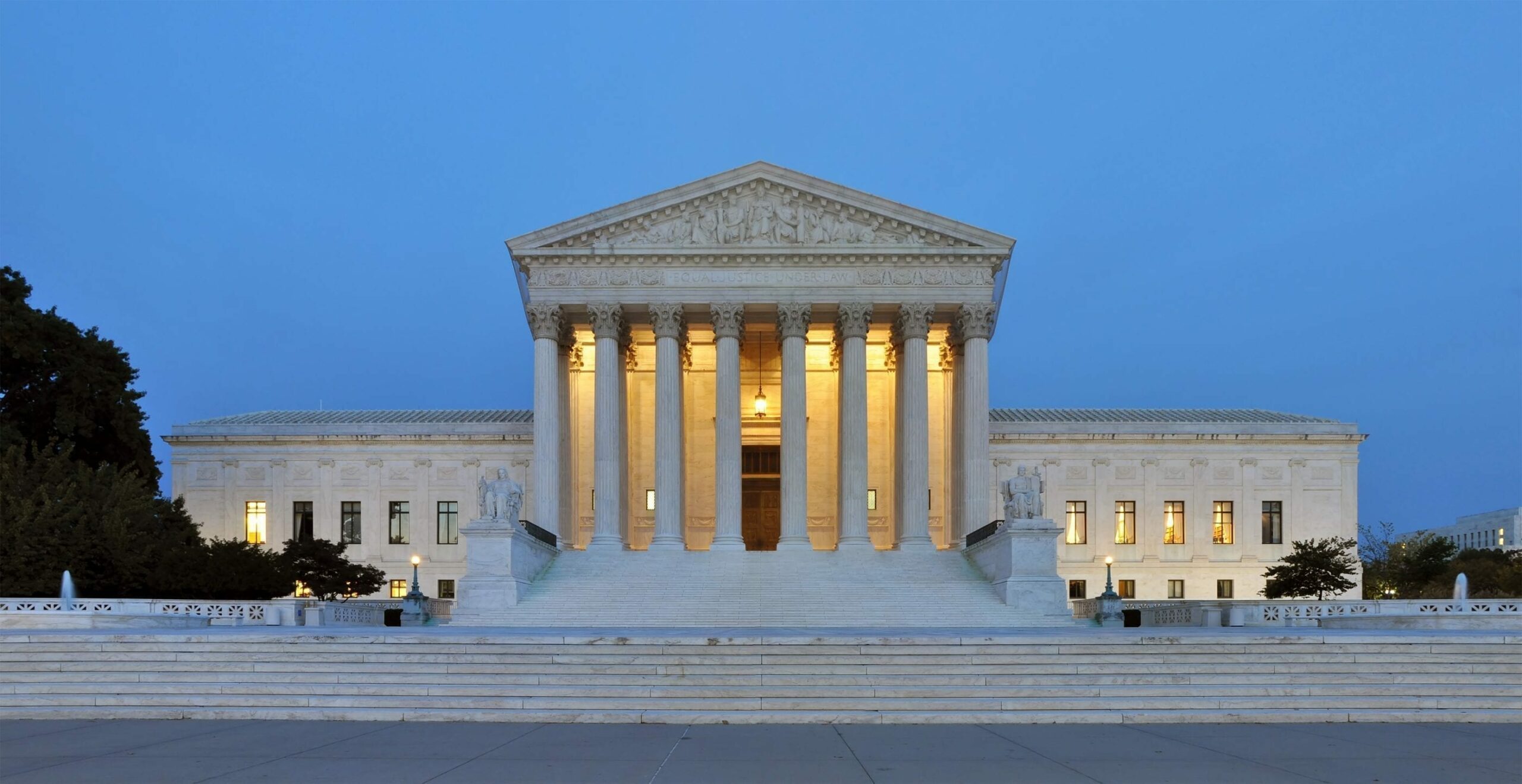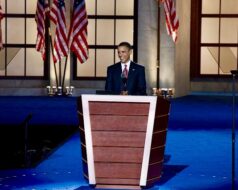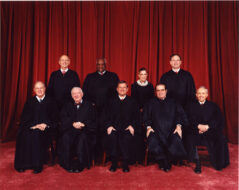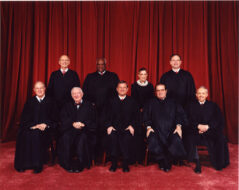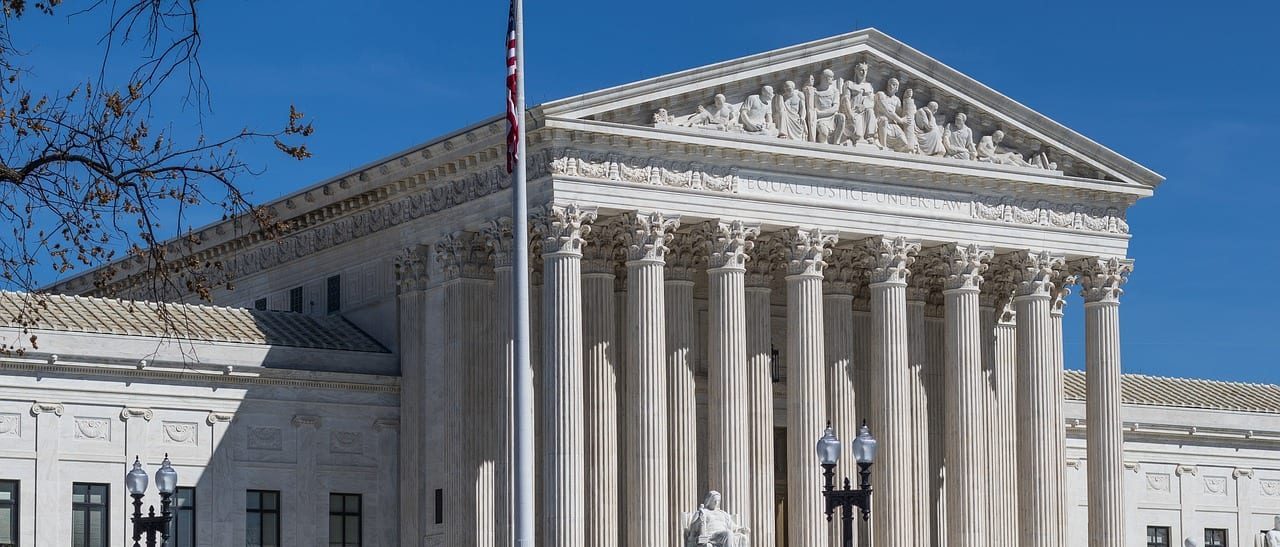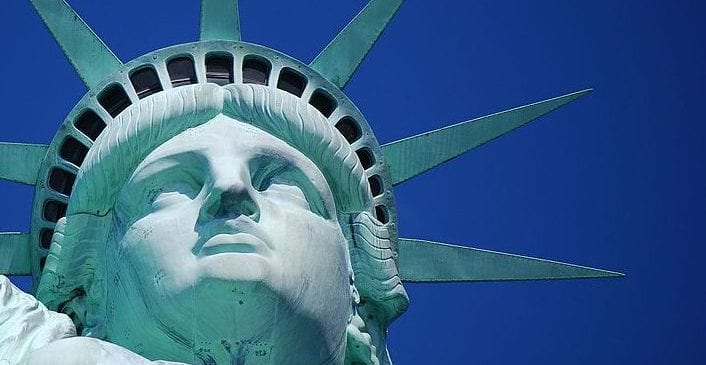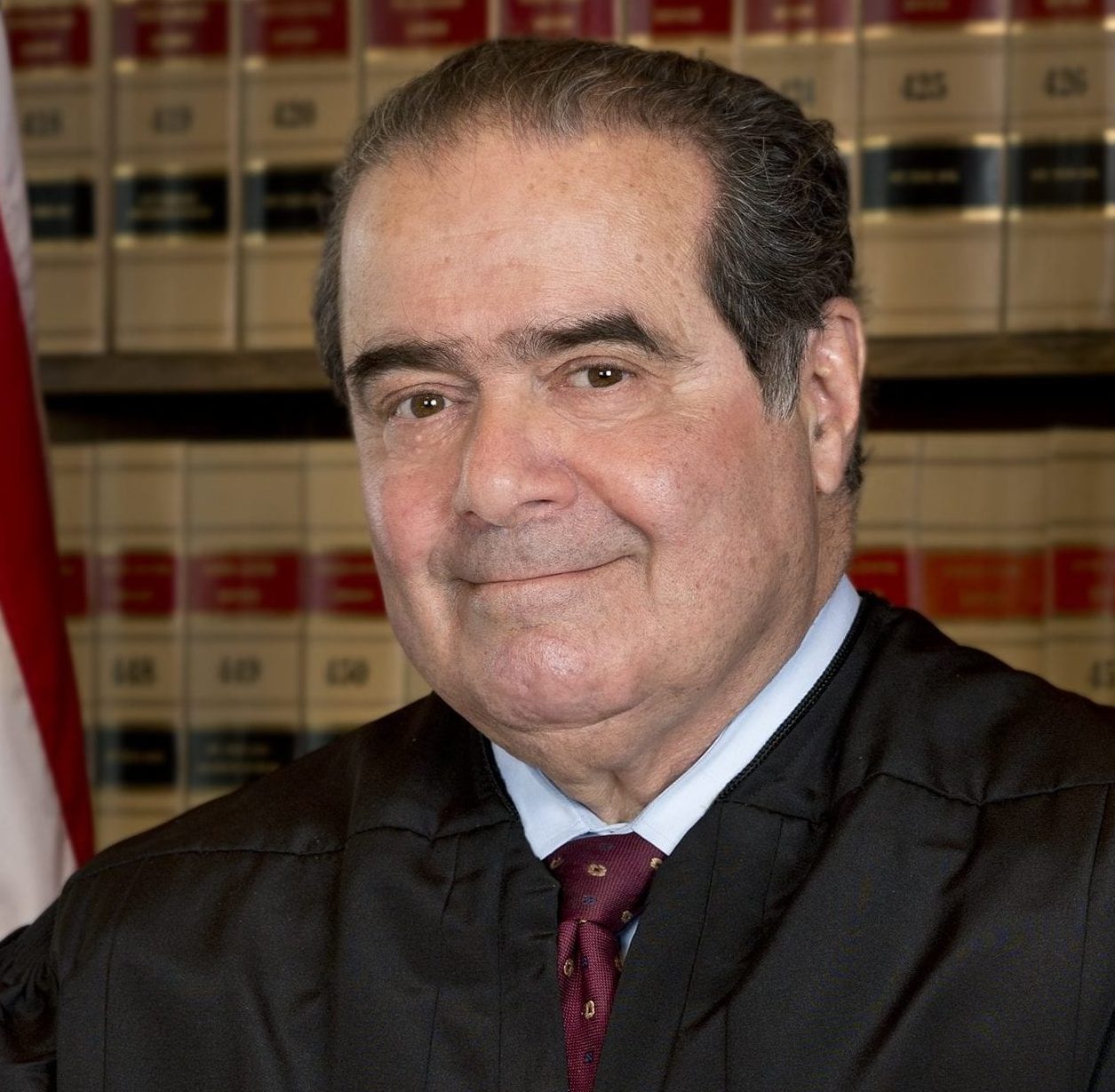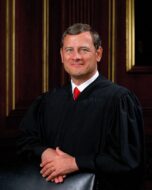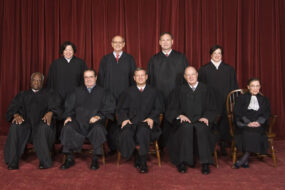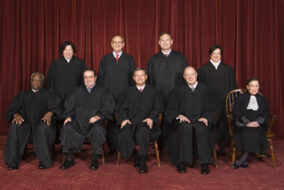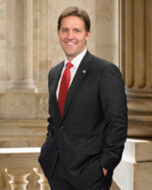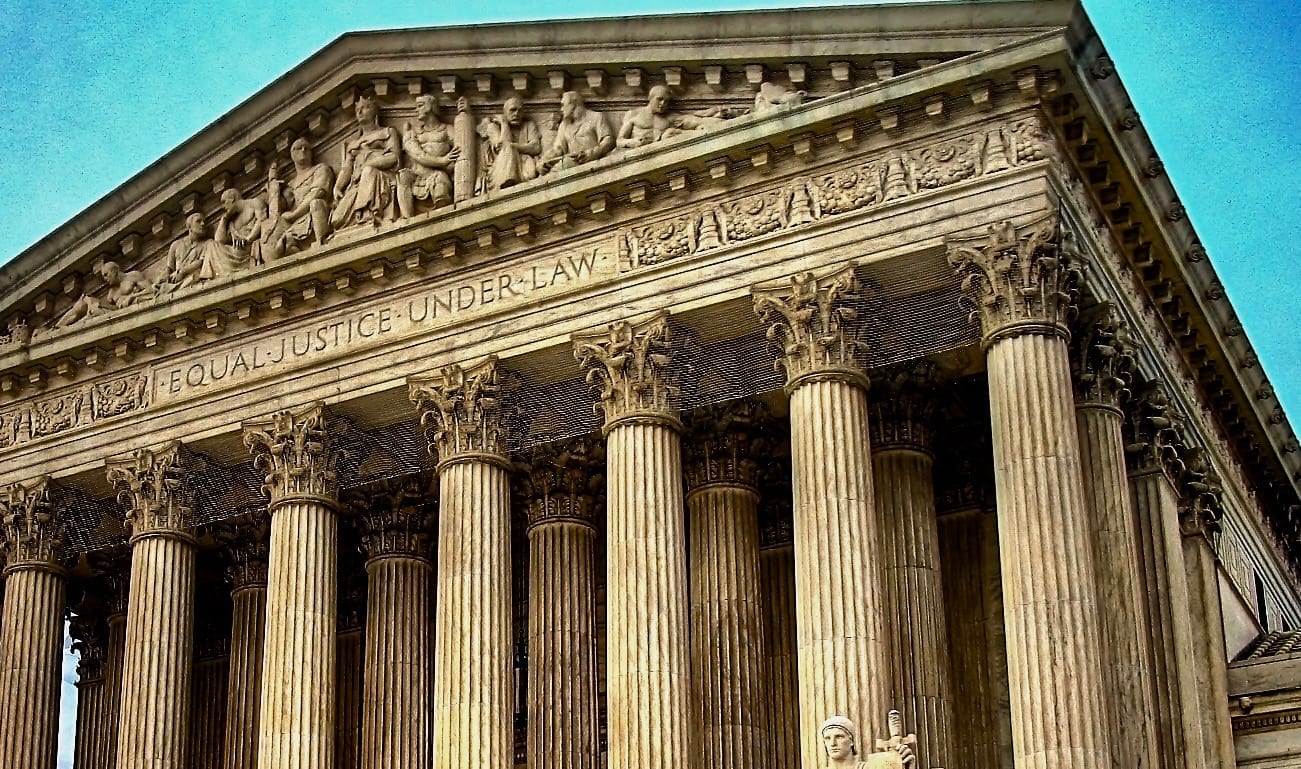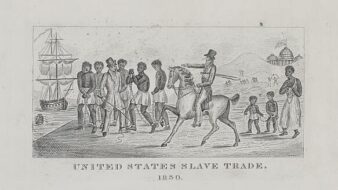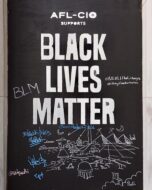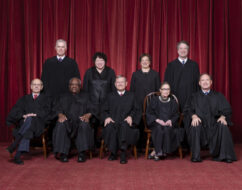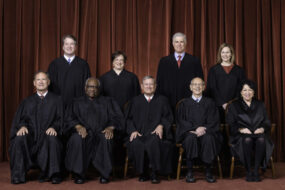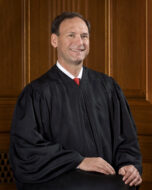


No related resources
Introduction
In this case, with no justice dissenting but with various views expressed among several concurring opinions, the Court clarified its free exercise reasoning: laws that violate free exercise of religion are put under the “strict scrutiny” test in order to justify their constitutionality. (The Court applies this same test, for example, to government practices that discriminate on the basis of race: they are presumptively unconstitutional.) The Florida city of Hialeah attempted to ban a Santeria church by enacting public health laws banning the animal slaughter essential to its practice. Justice Anthony Kennedy relates the main facts in this unanimous opinion.
Source: 508 U.S. 520 (1993), https://www.law.cornell.edu/supct/html/91-948.ZO.html. We include only excerpts of Justice Kennedy’s opinion for the court, omitting the clashing concurrences of Justices Harry A. Blackmun, Antonin Scalia, and David H. Souter. Justices Scalia and Souter continued their disputes from earlier cases, such as Lee v. Weisman. All notes added by the editors.
Justice Anthony Kennedy delivered the opinion of the Court.
The principle that government may not enact laws that suppress religious belief or practice is so well understood that few violations are recorded in our opinions. Concerned that this fundamental nonpersecution principle of the First Amendment was implicated here, however, we granted certiorari.[1]
Our review confirms that the laws in question were enacted by officials who did not understand, failed to perceive, or chose to ignore the fact that their official actions violated the nation’s essential commitment to religious freedom. The challenged laws had an impermissible object; and in all events the principle of general applicability was violated because the secular ends asserted in defense of the laws were pursued only with respect to conduct motivated by religious beliefs. We invalidate the challenged enactments and reverse the judgment of the Court of Appeals.
This case involves practices of the Santeria religion, which originated in the nineteenth century. When hundreds of thousands of members of the Yoruba people were brought as slaves from eastern Africa to Cuba, their traditional African religion absorbed significant elements of Roman Catholicism. The resulting syncretion, or fusion, is Santeria, “the way of the saints.” The Cuban Yoruba express their devotion to spirits, called orishas, through the iconography of Catholic saints, Catholic symbols are often present at Santeria rites, and Santeria devotees attend the Catholic sacraments.
The Santeria faith teaches that every individual has a destiny from God, a destiny fulfilled with the aid and energy of the orishas. The basis of the Santeria religion is the nurture of a personal relation with the orishas, and one of the principal forms of devotion is an animal sacrifice. The sacrifice of animals as part of religious rituals has ancient roots. . . .
According to Santeria teaching, the orishas are powerful but not immortal. They depend for survival on the sacrifice. Sacrifices are performed at birth, marriage, and death rites, for the cure of the sick, for the initiation of new members and priests, and during an annual celebration. Animals sacrificed in Santeria rituals include chickens, pigeons, doves, ducks, guinea pigs, goats, sheep, and turtles. The animals are killed by the cutting of the carotid arteries in the neck. The sacrificed animal is cooked and eaten, except after healing and death rituals.
Santeria adherents faced widespread persecution in Cuba, so the religion and its rituals were practiced in secret. The open practice of Santeria and its rites remains infrequent. . . . The District Court estimated that there are at least 50,000 practitioners in South Florida today.
Petitioner Church of the Lukumi Babalu Aye, Inc. (church), is a not for profit corporation organized under Florida law in 1973. The church and its congregants practice the Santeria religion. The president of the church is petitioner Ernesto Pichardo, who is also the church’s priest and holds the religious title of Italero, the second highest in the Santeria faith. In April 1987, the church leased land in the city of Hialeah, Florida, and announced plans to establish a house of worship as well as a school, cultural center, and museum. Pichardo indicated that the church’s goal was to bring the practice of the Santeria faith, including its ritual of animal sacrifice, into the open. The church began the process of obtaining utility service and receiving the necessary licensing, inspection, and zoning approvals. Although the church’s efforts at obtaining the necessary licenses and permits were far from smooth, it appears that it received all needed approvals by early August 1987.
The prospect of a Santeria church in their midst was distressing to many members of the Hialeah community, and the announcement of the plans to open a Santeria church in Hialeah prompted the city council to hold an emergency public session on June 9, 1987. . . .
A summary [of the ordinances passed at that and later meetings] suffices here, beginning with the enactments passed at the June 9 meeting. First, the city council adopted Resolution 87-66, which noted the “concern” expressed by residents of the city “that certain religions may propose to engage in practices which are inconsistent with public morals, peace or safety,” and declared that “[t]he city reiterates its commitment to a prohibition against any and all acts of any and all religious groups which are inconsistent with public morals, peace or safety.” Next, the council approved an emergency ordinance, Ordinance 87-40, that incorporated in full, except as to penalty, Florida’s animal cruelty laws. Among other things, the incorporated state law subjected to criminal punishment “[w]hoever . . . unnecessarily or cruelly . . . kills any animal.”
The city council desired to undertake further legislative action, but Florida law prohibited a municipality from enacting legislation relating to animal cruelty that conflicted with state law. To obtain clarification, Hialeah’s city attorney requested an opinion from the attorney general of Florida as to whether § 828.12 prohibited “a religious group from sacrificing an animal in a religious ritual or practice” and whether the city could enact ordinances “making religious animal sacrifice unlawful.” The attorney general . . . advised that religious animal sacrifice was against state law, so that a city ordinance prohibiting it would not be in conflict. . . .
In September 1987, the city council adopted three substantive ordinances addressing the issue of religious animal sacrifice. Ordinance 87-52 defined “sacrifice” as “to unnecessarily kill, torment, torture, or mutilate an animal in a public or private ritual or ceremony not for the primary purpose of food consumption,” and prohibited owning or possessing an animal “intending to use such animal for food purposes.” It restricted application of this prohibition, however, to any individual or group that “kills, slaughters or sacrifices animals for any type of ritual, regardless of whether or not the flesh or blood of the animal is to be consumed.” The ordinance contained an exemption for slaughtering by “licensed establishment[s]” of animals “specifically raised for food purposes.” Declaring, moreover, that the city council “has determined that the sacrificing of animals within the city limits is contrary to the public health, safety, welfare and morals of the community,” the city council adopted Ordinance 87-71. That ordinance defined sacrifice as had Ordinance 87-52, and then provided that “[i]t shall be unlawful for any person, persons, corporations or associations to sacrifice any animal within the corporate limits of the city of Hialeah, Florida.” The final Ordinance, 87-72, defined “slaughter” as “the killing of animals for food” and prohibited slaughter outside of areas zoned for slaughterhouse use. The ordinance provided an exemption, however, for the slaughter or processing for sale of “small numbers of hogs and/or cattle per week in accordance with an exemption provided by state law.” All ordinances and resolutions passed the city council by unanimous vote. Violations of each of the four ordinances were punishable by fines not exceeding $500 or imprisonment not exceeding 60 days, or both. . . .
. . . The city does not argue that Santeria is not a “religion” within the meaning of the First Amendment. Nor could it. Although the practice of animal sacrifice may seem abhorrent to some, “religious beliefs need not be acceptable, logical, consistent, or comprehensible to others in order to merit First Amendment protection.” Thomas v. Review Bd. of Indiana Employment Security Div., 450 U.S. 707, 714 (1981). Given the historical association between animal sacrifice and religious worship, petitioners’ assertion that animal sacrifice is an integral part of their religion “cannot be deemed bizarre or incredible.” Frazee v. Illinois Dept. of Employment Security, 489 U.S. 829, 834, n. 2 (1989). Neither the city nor the courts below, moreover, have questioned the sincerity of petitioners’ professed desire to conduct animal sacrifices for religious reasons. We must consider petitioners’ First Amendment claim.
In addressing the constitutional protection for free exercise of religion, our cases establish the general proposition that a law that is neutral and of general applicability need not be justified by a compelling governmental interest even if the law has the incidental effect of burdening a particular religious practice. Employment Div., Dept. of Human Resources of Oregon v. Smith.[2] Neutrality and general applicability are interrelated, and, as becomes apparent in this case, failure to satisfy one requirement is a likely indication that the other has not been satisfied. A law failing to satisfy these requirements must be justified by a compelling governmental interest and must be narrowly tailored to advance that interest. These ordinances fail to satisfy the Smith requirements. We begin by discussing neutrality.
In our Establishment Clause cases we have often stated the principle that the First Amendment forbids an official purpose to disapprove of a particular religion or of religion in general. These cases, however, for the most part have addressed governmental efforts to benefit religion or particular religions, and so have dealt with a question different, at least in its formulation and emphasis, from the issue here. Petitioners allege an attempt to disfavor their religion because of the religious ceremonies it commands, and the Free Exercise Clause is dispositive in our analysis.
At a minimum, the protections of the Free Exercise Clause pertain if the law at issue discriminates against some or all religious beliefs or regulates or prohibits conduct because it is undertaken for religious reasons. Indeed, it was “historical instances of religious persecution and intolerance that gave concern to those who drafted the Free Exercise Clause.” Bowen v. Roy, 476 U.S. 693, 703 (1986) (opinion of Burger, C. J.). These principles, though not often at issue in our Free Exercise Clause cases, have played a role in some. . . .
Although a law targeting religious beliefs as such is never permissible, if the object of a law is to infringe upon or restrict practices because of their religious motivation, the law is not neutral; and it is invalid unless it is justified by a compelling interest and is narrowly tailored to advance that interest. There are, of course, many ways of demonstrating that the object or purpose of a law is the suppression of religion or religious conduct. To determine the object of a law, we must begin with its text, for the minimum requirement of neutrality is that a law not discriminate on its face. A law lacks facial neutrality if it refers to a religious practice without a secular meaning discernable from the language or context. Petitioners contend that three of the ordinances fail this test of facial neutrality because they use the words “sacrifice” and “ritual,” words with strong religious connotations. We agree that these words are consistent with the claim of facial discrimination, but the argument is not conclusive. The words “sacrifice” and “ritual” have a religious origin, but current use admits also of secular meanings. The ordinances, furthermore, define “sacrifice” in secular terms, without referring to religious practices.
We reject the contention advanced by the city, that our inquiry must end with the text of the laws at issue. Facial neutrality is not determinative. The Free Exercise Clause, like the Establishment Clause, extends beyond facial discrimination. The clause “forbids subtle departures from neutrality” Gillette v. United States, 401 U.S. 437, 452 (1971), and “covert suppression of particular religious beliefs,” Bowen v. Roy, supra, (opinion of Burger, C. J.). Official action that targets religious conduct for distinctive treatment cannot be shielded by mere compliance with the requirement of facial neutrality. The Free Exercise Clause protects against governmental hostility which is masked, as well as overt. “The Court must survey meticulously the circumstances of governmental categories to eliminate, as it were, religious gerrymanders.” Walz v. Tax Commission of New York City, 397 U.S. 664, 696 (1970) (Harlan, J., concurring).
The record in this case compels the conclusion that suppression of the central element of the Santeria worship service was the object of the ordinances. First, though use of the words “sacrifice” and “ritual” does not compel a finding of improper targeting of the Santeria religion, the choice of these words is support for our conclusion. There are further respects in which the text of the city council’s enactments discloses the improper attempt to target Santeria. Resolution 87-66, adopted June 9, 1987, recited that “residents and citizens of the city of Hialeah have expressed their concern that certain religions may propose to engage in practices which are inconsistent with public morals, peace or safety,” and “reiterate[d]” the city’s commitment to prohibit “any and all [such] acts of any and all religious groups.” No one suggests, and on this record it cannot be maintained, that city officials had in mind a religion other than Santeria.
It becomes evident that these ordinances target Santeria sacrifice when the ordinances’ operation is considered. Apart from the text, the effect of a law in its real operation is strong evidence of its object. To be sure, adverse impact will not always lead to a finding of impermissible targeting. For example, a social harm may have been a legitimate concern of government for reasons quite apart from discrimination. The subject at hand does implicate, of course, multiple concerns unrelated to religious animosity, for example, the suffering or mistreatment visited upon the sacrificed animals, and health hazards from improper disposal. But the ordinances when considered together disclose an object remote from these legitimate concerns. The design of these laws accomplishes instead a “religious gerrymander,” an impermissible attempt to target petitioners and their religious practices.
It is a necessary conclusion that almost the only conduct subject to Ordinances 87-40, 87-52, and 87-71 is the religious exercise of Santeria church members. The texts show that they were drafted in tandem to achieve this result. . . . The net result of the gerrymander is that few if any killings of animals are prohibited other than Santeria sacrifice, which is proscribed because it occurs during a ritual or ceremony and its primary purpose is to make an offering to the orishas, not food consumption. Indeed, careful drafting ensured that, although Santeria sacrifice is prohibited, killings that are no more necessary or humane in almost all other circumstances are unpunished. . . .
. . . As we noted in Smith, in circumstances in which individualized exemptions from a general requirement are available, the government “may not refuse to extend that system to cases of ‘religious hardship’ without compelling reason.” Respondent’s application of the ordinance’s test of necessity devalues religious reasons for killing by judging them to be of lesser import than nonreligious reasons. Thus, religious practice is being singled out for discriminatory treatment.
We also find significant evidence of the ordinances’ improper targeting of Santeria sacrifice in the fact that they proscribe more religious conduct than is necessary to achieve their stated ends. It is not unreasonable to infer, at least when there are no persuasive indications to the contrary, that a law which visits “gratuitous restrictions” on religious conduct seeks not to effectuate the stated governmental interests, but to suppress the conduct because of its religious motivation.
The legitimate governmental interests in protecting the public health and preventing cruelty to animals could be addressed by restrictions stopping far short of a flat prohibition of all Santeria sacrificial practice. If improper disposal, not the sacrifice itself, is the harm to be prevented, the city could have imposed a general regulation on the disposal of organic garbage. It did not do so. . . . The neutrality of a law is suspect if First Amendment freedoms are curtailed to prevent isolated collateral harms not themselves prohibited by direct regulation.
Under similar analysis, narrower regulation would achieve the city’s interest in preventing cruelty to animals. . . .
In sum, the neutrality inquiry leads to one conclusion: The ordinances had as their object the suppression of religion. The pattern we have recited discloses animosity to Santeria adherents and their religious practices; the ordinances by their own terms target this religious exercise; the texts of the ordinances were gerrymandered with care to proscribe religious killings of animals but to exclude almost all secular killings; and the ordinances suppress much more religious conduct than is necessary in order to achieve the legitimate ends asserted in their defense. These ordinances are not neutral, and the court below committed clear error in failing to reach this conclusion.
We turn next to a second requirement of the Free Exercise Clause, the rule that laws burdening religious practice must be of general applicability. . . .
The principle that government, in pursuit of legitimate interests, cannot in a selective manner impose burdens only on conduct motivated by religious belief is essential to the protection of the rights guaranteed by the Free Exercise Clause. The principle underlying the general applicability requirement has parallels in our First Amendment jurisprudence. In this case we need not define with precision the standard used to evaluate whether a prohibition is of general application, for these ordinances fall well below the minimum standard necessary to protect First Amendment rights. . . .
We conclude, in sum, that each of Hialeah’s ordinances pursues the city’s governmental interests only against conduct motivated by religious belief. The ordinances “ha[ve] every appearance of a prohibition that society is prepared to impose upon [Santeria worshippers] but not upon itself.” The Florida Star v. B. J. F., 491 U.S. 524, 542 (1989) (Scalia, J., concurring in part and concurring in judgment). This precise evil is what the requirement of general applicability is designed to prevent.
A law burdening religious practice that is not neutral or not of general application must undergo the most rigorous of scrutiny. To satisfy the commands of the First Amendment, a law restrictive of religious practice must advance “interests of the highest order” and must be narrowly tailored in pursuit of those interests. McDaniel v. Paty, 435 U.S., at 628, quoting Wisconsin v. Yoder, 406 U.S. 205, 215 (1972). The compelling interest standard that we apply once a law fails to meet the Smith requirements is not “water[ed] . . . down” but “really means what it says.” A law that targets religious conduct for distinctive treatment or advances legitimate governmental interests only against conduct with a religious motivation will survive strict scrutiny only in rare cases. It follows from what we have already said that these ordinances cannot withstand this scrutiny. . . .
The Free Exercise Clause commits government itself to religious tolerance, and upon even slight suspicion that proposals for state intervention stem from animosity to religion or distrust of its practices, all officials must pause to remember their own high duty to the Constitution and to the rights it secures. Those in office must be resolute in resisting importunate demands and must ensure that the sole reasons for imposing the burdens of law and regulation are secular. Legislators may not devise mechanisms, overt or disguised, designed to persecute or oppress a religion or its practices. The laws here in question were enacted contrary to these constitutional principles, and they are void.
State of the Union Address (1994)
January 25, 1994
Conversation-based seminars for collegial PD, one-day and multi-day seminars, graduate credit seminars (MA degree), online and in-person.





